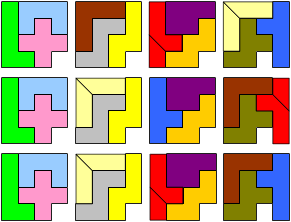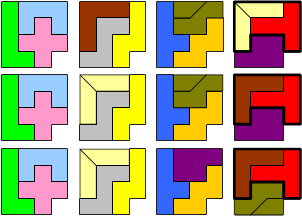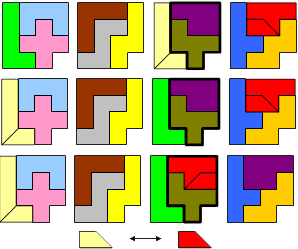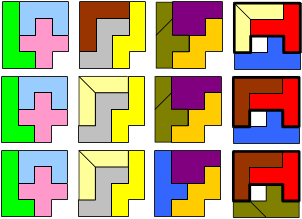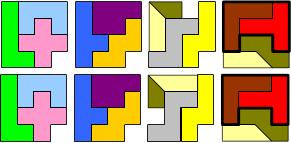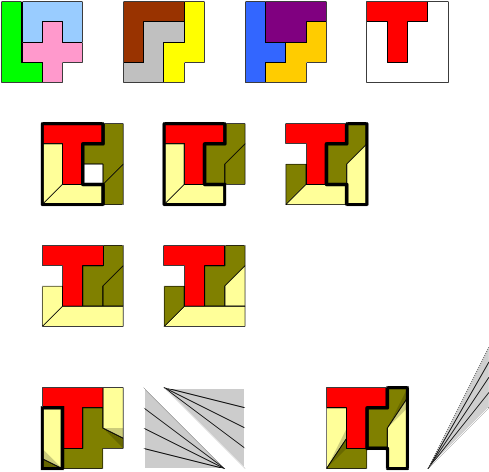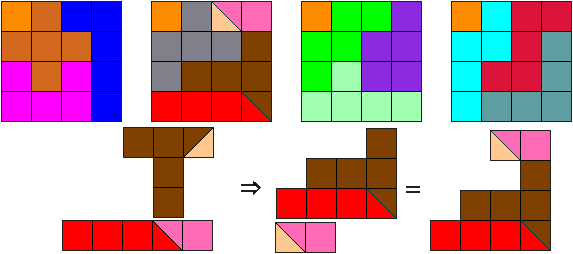Start with the 12 pentominoes.

Make a single diagonal cut in two of the pentominoes.
Pack the resulting 14 pieces and 4 monominoes into four 4×4 squares.
We got a wonderful document of Helmut Postl.
Since the I-pentomino is the only one which does not fit into a 4×4-square, it has to be split all the time. There seems to be no way to cut the I-pentomino twice, so the second cut has to be made on a different pentomino. For all given solutions, this is the F or the T.
Remark: Only holes of polyomino shape are considered. There are many more possibilities if the holes may have diagonal borders. (This is an other nice problem)
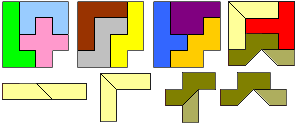
Two squares contain 3 whole pentominos, and two squares contain 2 whole pentominoes.
1. Each of the four squares contain exactly one monomino hole.
In the sequel, a thick black closed line is meant to surround a symmetric shape which can be flipped over to give new solutions.
